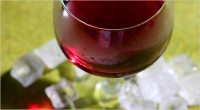Grapevine: Alternative Sources for Your Next Wine Purchase
 More wines, from more wineries, from more regions have been introduced into the market in the last five years – and for the most part, they’re all palatable. Until recently, most of these wines were marketed through three traditional channels: wineries sold to wholesalers (distributors or importers) who in turn were the exclusive source for retail wine shops.
More wines, from more wineries, from more regions have been introduced into the market in the last five years – and for the most part, they’re all palatable. Until recently, most of these wines were marketed through three traditional channels: wineries sold to wholesalers (distributors or importers) who in turn were the exclusive source for retail wine shops.
With the acceptance of the Internet as a basic means for many individuals to communicate, socialize and shop, this rigid and government mandated/regulated three-tier distribution system is being challenged at every level. The sale of wine directly to consumers is beginning to proliferate as never before. Pressure on traditional brick-and-mortar neighborhood wine shops has never been greater. This Internet-based pressure comes in many shapes and sizes. I’ve categorized these new business models into four categories:
1) Wine clubs have been around as snail mail offerings for decades; Internet subscriptions have grown geometrically in the last three years (e.g. Wall Street Journal Wine Club).
2) Traditional on-line retail websites have had a difficult time sorting out the vast regulations mandated by the three-tier system, but a few have survived. Last week I reported a new entrant – Amazon – that may finally break new ground in selling directly to consumers.
3) Small to medium sized wineries are embracing the internet as a means to better reach out to consumers and sell their wines directly to their email lists of present and future loyal customers.
4) A number of retailers and marketers have created “flash sales sites,” appealing to consumers focused on The Deal, above all. These sites’ business model is to a) send periodic emails to customers b) offering small quantities of wine at c) steep discounts d) for a limited time – a 24/7 Black Friday from the convenience of your home computer or mobile device.
Flash sales sites are based on two models: brick-and-mortar retail wine shops that have created alternative, web-based sales channels to offer their existing inventory, at discounted prices. Second, marketers without retail licenses that have created websites that serve as a conduit for producers and distributors to sell their wines. These marketers typically have no retail license, no inventoried wines and no logistics platform.
Using technology, both have revolutionized the way wines are being sold. Most significantly they are skirting the draconian three-tier distribution system by marketing directly to consumers. NOTE: last year, sales represented 1% of total wine sales.
A typical sales pitch: We have secured a very limited supply of Three-Tier- Buster, a 90 point-rated red wine blend available exclusively to email subscribers for the next 24 hours or until sold out. Retail price: $50. Lowest published price: $39.99. Act now for $23.99, a 48% discount; minimum purchase: three bottles (free shipping on 6 bottles).
How does this appeal to those in the food chain?
Consumers: It’s the thrill of The Deal. An opportunity to purchase highly rated wine at a steep discount that retail shops rarely offer.
Producers and distributors: Flash sales sites provide an opportunity to sell wine through a new channel while building their mailing list. The wines may be current popular offerings, excess inventory or previous vintage leftovers.
Retailers: A new competitor and a threat to in-store sales. However, several have joined the enemy. Virtual stores have popped up to supplement their brick-and-mortar footprint. In our area, RyeBrookWines.com is very popular.
Support businesses: outsourcing companies have sprung up to support logistics platforms, process orders and man call centers. In our area, Alba Vineyard Consulting (Alba-Vineyard.com) provides these services.

Several current popular sites are worth visiting: WineShopper.com (backed by a brick-and-mortar retailer (“BMR”)), WinesTillSoldOut.com (BMR), Lot18.com (Internet marketer only (“IMO”)), Wine.Woot.com (IMO), CinderellaWine.com (BMR) and WineAccess.com (IMO). One of the quirkiest sites is Garagiste.com (IMO). Overwhelmed by multiple sites? There are aggregators that summarize offers from a number of flash sites: winehoarder.com and winenabber.com are two I’ve explored.
Will flash sites become a flash-in-the-pan industry, an of-the-moment novelty that is here today and gone tomorrow? Or, will they survive simply because consumers are always chasing a “great deal?”
Nick Antonaccio is a 35 year Pleasantville resident. For over 15 years he has conducted numerous wine tastings and lectures. He is co-host of Glass Up, Glass Down, a local cable television series on wine and food; he also offers personalized wine tastings and wine travel services. Nick’s credo: continuous experimenting results in instinctive behavior. You can reach him at nantonaccio@theexaminernews.com or on Twitter @sharingwine.

